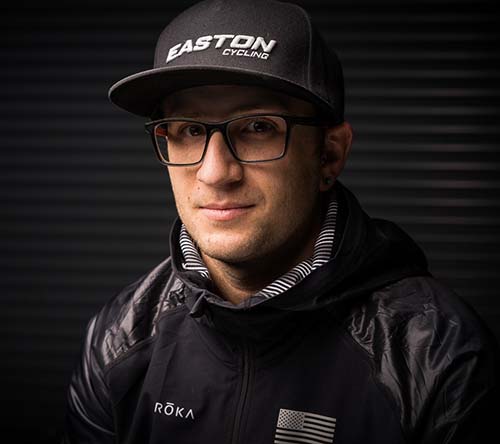As many of us in the northern hemisphere burrow deeper into our winter pain caves, here are five winter training tips to ensure you emerge from winter and into the spring/summer race season stronger than ever.
1. Analyze The Past, Measure The Present, Focus On The Future
The key to planning a successful race season is to develop a set of goals and benchmarks for your ideal performance. We can’t adequately plan for future performance, however, without first analyzing past performances and measuring the current state of our fitness and skills.
When I sit down with my athletes to plan for the upcoming season, I first like to look back at the training and results from the previous season to identify areas of growth and areas still in need of development. This goes for both skills and fitness, and is used to create a rough framework of areas to focus on in the coming months, season, or years. I then run each of my athletes through a testing protocol to determine their current level of fitness. The information gleaned from this process can then be compared to the analysis of the previous season, and used to reinforce or redirect the developmental needs of the athlete. From this point on, we look only to the future, as we develop season goals and a plan of attack for training and racing.
2. Go Easy to Go Hard
The early part of the off-season should be about establishing a broad base of aerobic efficiency before transitioning into focused blocks of aerobic development. More simply put, this is not the time to grow your threshold, but to build a level of resilience that allows you to better tolerate the physiological load required to increase your threshold in future training phases.
The early months of the off-season is a great time to focus on lower intensity, higher volume riding, as well as developing mechanical efficiency via cadence work. This lower intensity riding prioritizes fat oxidation, increases aerobic efficiency, and lays a foundation of fatigue resistance that will support the hard work to come. Sometimes you need to go easy now so you can go harder later.
3. Dial Your Fit/Position On The Bike
In addition to structured and athlete-specific training, one of the biggest things you can do to impact the quality of your time spent on the bike is to invest in a proper bike fit. A professional bike fit should allow you to dial in your position on the bike to maximize both aerodynamics and comfort.
Why is this an off-season task? First, tweaking or modifying your position on the bike is best done in the off-season where there is less impact/consequences to performance compared to race season. This allows you time to address any discomfort before you toe the line this summer. Second, over time your fit may change. The road to optimizing your position is sometimes long and may require tweaks over the course of months or seasons before you land on a truly optimized race position. Starting the fit process in the off-season allows you to spend a lot of time in this position while intensity is lower and volume/duration is higher, which should allow you enough time to adapt and get comfortable before the higher intensity work begins.
4. Prioritize Body Composition Now, Not Later
If you’re going to operate in a calorie deficit and try to make body composition changes, do it now, when intensity is lower and thus carbohydrate utilization can decrease slightly, with minimal effect to on the bike performance. Depriving yourself of calories/fuel during peak season is a recipe for underperformance and potentially illness/injury. If you feel like you realistically need to make body composition changes, start now so you can fuel adequately during the more intense training phases throughout the season.
5. Start Fueling Your Efforts
I know I literally just said that this time of year is ideal for calorie restriction and body composition changes. However, it would be irresponsible for me to not mention the importance of properly fueling your training. While a slight calorie deficit might be necessary to meet body composition goals, I wholeheartedly support the notion of never dieting while on the bike. If you find yourself doing longer rides, or adding in any intensity whatsoever, you should absolutely fuel that work. Hard work still needs to be fueled. Give your body what it needs, when it needs it.
Finally, if you plan to race with a high intake of carbohydrates, start building your tolerance now. Over the next few months, slowly increase the amount of carbohydrate you intake during a ride until you find your optimal amount. It takes time for the gut to adapt to increased carbohydrate intake- don’t wait until race day!
Coach Kyle is the owner and head coach of White Pine Athletics. Kyle has spent the bulk of his coaching career applying a science-based training approach to develop elite adult and junior athletes to their peak performance on road and off-road. If you’d like to learn more about White Pine Athletics visit whitepineathletics.com or schedule a free discovery call with Coach Kyle



